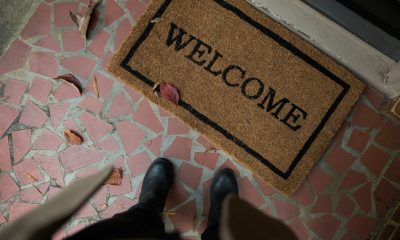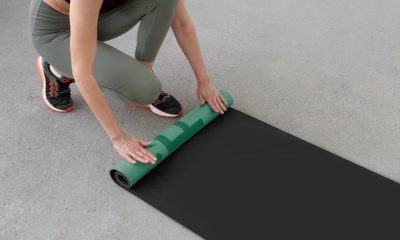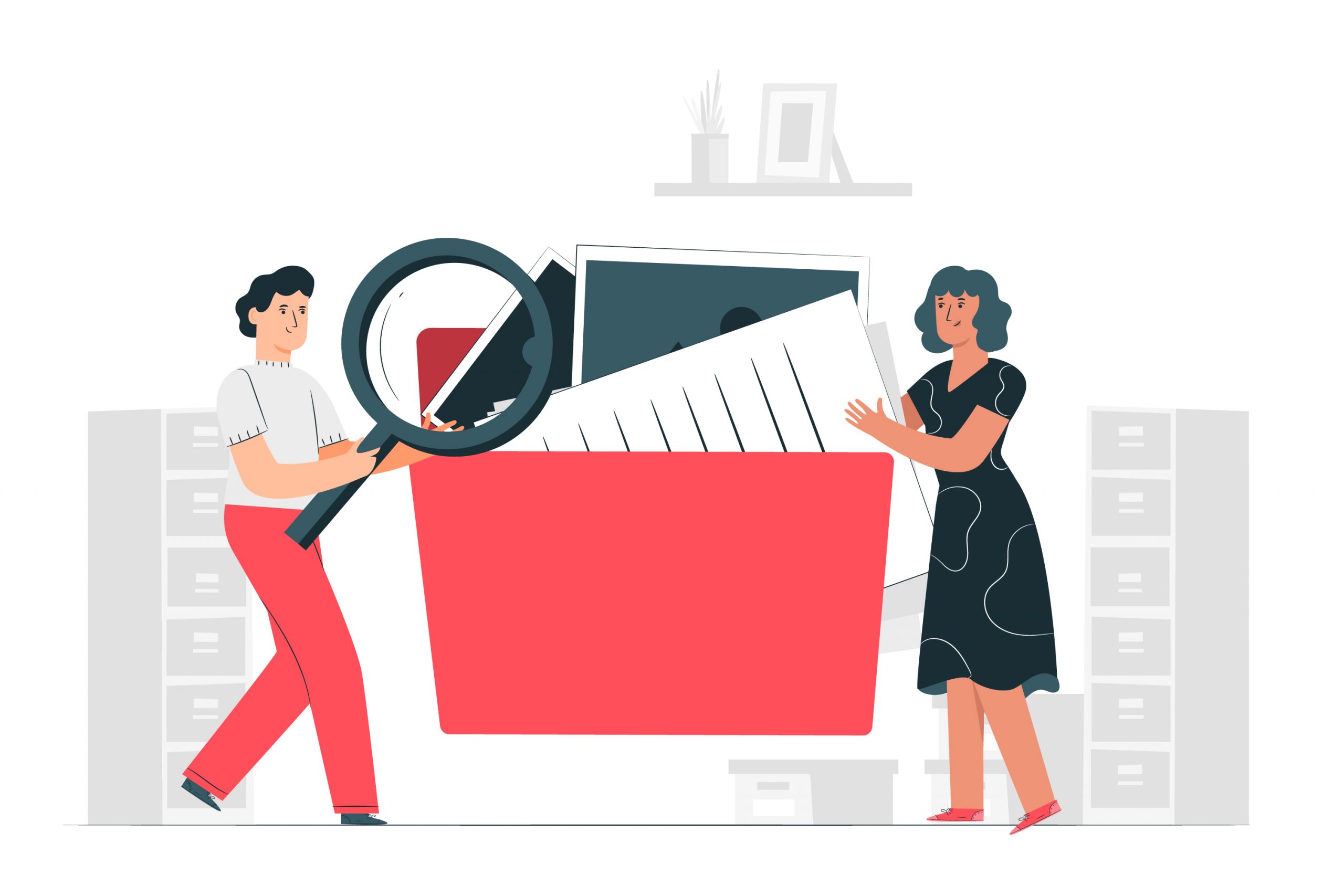Home Decor
Expert Cleaning Tips for London Homes
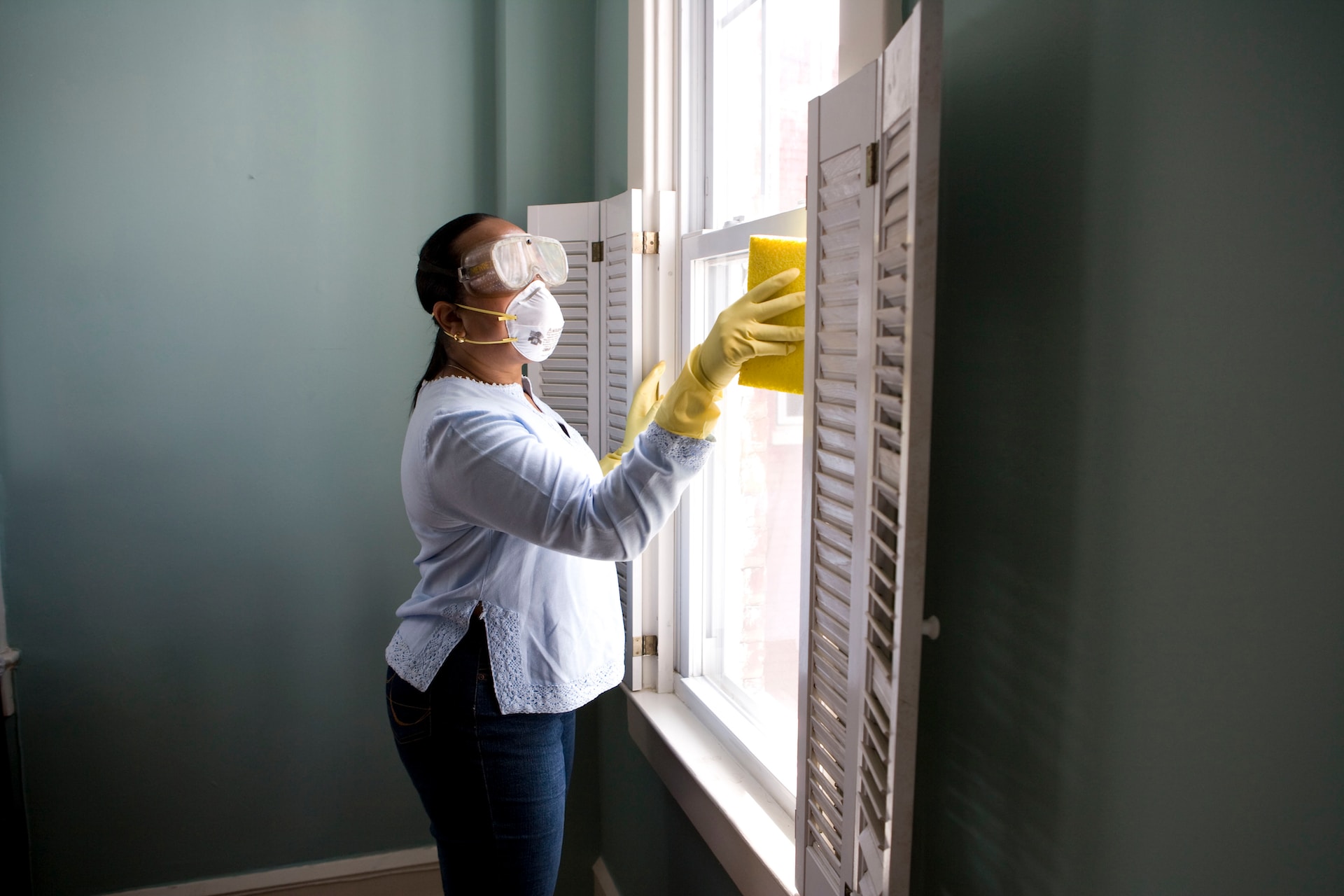
London, with its vibrant culture and historic charm, is one of the world’s most iconic cities. Living in London means embracing both its buzzing city life and the challenges that come with maintaining a clean home amidst the city’s unique climate and lifestyle. From the unpredictable weather to the city’s persistent pollution, keeping your London home clean can seem daunting. However, with a few expert tips, you can ensure your home stays pristine and fresh.
Important Cleaning Tips For London Homes
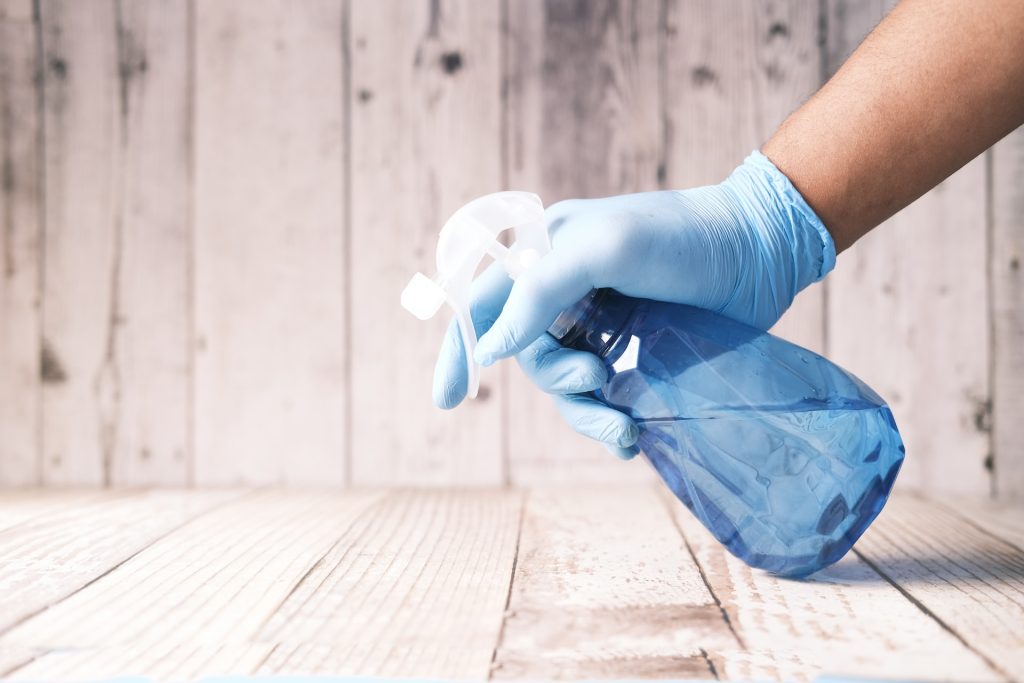
1. Doormat Double-Up
Every London home understands the challenge of muddy footprints on a rainy day. Using a two-mat system significantly reduces the dirt that gets tracked inside. A rugged outdoor mat scrapes off most mud, while a plush interior mat absorbs moisture and catches finer particles. Over a year, this can drastically cut down on cleaning time and even extend the lifespan of your floor finishes.
2. Rainy Day Window Cleaning
Thanks to London’s urban environment, rain can leave grimy residue on windows. Rather than let it accumulate, tackle this using a half-and-half mix of white vinegar and water. This solution effectively breaks down pollution-based spots and gives windows a crystal-clear shine. Regular cleaning also offers unobstructed views of London’s iconic skyline.
3. Dust-Defying Cloths
London’s streets are notorious for dust and grime. Enter microfiber cloths: the MVP of dusting tools. Their unique design traps dust, ensuring you’re picking it up rather than spreading it around. Over time, this can drastically reduce allergens in your home, making for a fresher indoor environment and decreasing the frequency of required dusting.
4. Carpet Care
Urban environments can be tough on carpets. Weekly vacuuming with a high-efficiency machine is essential. However, twice-yearly professional deep cleans can extract the deeply embedded dirt that regular vacuums miss. This not only revitalizes the look of your carpet but can also remove potential allergens.
5. Air Purification
London’s dense population and traffic can lead to stuffy homes. Investing in air-purifying house plants, such as spider plants or rubber plants, can improve indoor air quality. These plants work tirelessly to remove pollutants, providing you with a fresher living environment and a touch of nature indoors.
6. Mould Prevention
Dampness and mould can be issues in London, especially during wetter months. Ensuring rooms, especially bathrooms, are well-ventilated helps in preventing mould growth. For minor outbreaks, a mix of tea tree oil and water can be a natural combatant, offering a fresh scent while tackling the problem.
7. Decluttering
In the heart of a bustling city like London, space is often a luxury. Urban homes, with their compact spaces, can become quickly overwhelmed with items, both essential and non-essential. Regular decluttering sessions, ideally once a month, are crucial to maximize available space. By meticulously selecting and retaining only what is truly necessary or deeply cherished, you not only simplify the cleaning process but also introduce a more open and breathable environment. This decluttered space can be therapeutic, offering a serene escape from the city’s relentless pace.
8. Chemical-Free Cleaning
The global move towards sustainability has resonated deeply in London. As a city that’s continually evolving, many of its residents have chosen to adopt eco-friendly cleaning practices. Traditional cleaning agents can often contain chemicals that harm the environment. However, natural ingredients like baking soda, lemon, and white vinegar provide a potent cleaning alternative. They’re not only effective in breaking down grime but also ensure that the household’s ecological footprint remains minimal, aligning with London’s sustainable vision.
9. Maintain Chimneys
While modern buildings sprout across London, many homes still exude historical charm, evident in features like traditional fireplaces. Such fireplaces, while nostalgic and cozy, demand consistent maintenance. Undertaking annual chimney sweeps is vital. This regular cleaning not only prevents the accumulation of soot and debris, which could lead to potential fire hazards but also ensures optimal airflow. This results in efficient, safer fires, allowing residents to enjoy those quintessential fireside evenings without worry.
10. Furniture Maintenance
London’s meteorological mood swings often translate to varied indoor moisture levels. This fluctuation can take a toll on furniture, especially materials like leather and wood. Adopting a routine of conditioning leather furnishings can prevent them from drying out or cracking. Similarly, polishing wooden pieces preserves their sheen and prevents moisture damage. By committing to such regular maintenance, homeowners can extend the life of their furniture, ensuring interiors remain vibrant, welcoming, and representative of their personal style.
11. Under-Furniture Cleaning
What lies beneath furniture is often overlooked in regular cleaning routines. Yet, these hidden spaces can be repositories for dust, allergens, and occasionally, pests. Every two to three months, a deliberate effort to shift furniture and address these spaces is recommended. Cleaning these areas reduces the risk of allergen build-up and can also act as a timely intervention, spotlighting issues like dampness or early signs of pest infestation, ensuring prompt action and a healthier living environment.
12. Special Care for Antiques
London’s storied past is often reflected within its homes, with many residents possessing heirlooms or antiques. Such items, steeped in history and often delicate, require specialized care. Using mild, non-abrasive cleaners preserves their structure and aesthetic. Periodic consultations with antique preservation experts can provide guidance tailored to specific pieces, ensuring that they remain preserved, and allowing their history to continue resonating within the home.
13. Tackle the Taps
One of the challenges London homeowners face is the city’s hard water, which can result in unsightly limescale build-up on taps and fixtures. To combat this, a proactive cleaning approach is vital. A natural mixture of lemon juice and vinegar, when applied regularly, can dissolve these mineral deposits, restoring the shine and efficient function of fixtures. This not only uplifts the aesthetic of bathrooms and kitchens but ensures longevity in plumbing fixtures, reducing long-term maintenance costs.
14. Regular Bed Cleaning
Sleep is pivotal for rejuvenation, and the cleanliness of our sleep environment directly impacts our health. Beyond the routine of changing sheets, mattresses act as repositories for dust mites and allergens. By vacuuming them every couple of months, you’re not only ensuring a cleaner sleep surface but actively reducing potential allergic triggers. Complement this with washing pillows and duvets at least once a season. This combination eradicates lingering bacteria and sweat, promoting a refreshing and hygienic sleeping environment conducive to restful nights.
15. Bathroom Ventilation
Bathrooms, with their inherent moisture and warmth, are breeding grounds for mould. Particularly in London’s damp climate, proper ventilation becomes paramount. After indulging in a hot shower or bath, it’s essential to either open a window or activate exhaust fans, ensuring swift moisture removal. This proactive approach dissipates steam, prevents condensation, and ultimately wards off mould formation. A well-ventilated bathroom is not only healthier but also exudes freshness, making every bath or shower experience revitalizing.
16. Kitchen Care
London, with its rich culinary heritage, inspires many to recreate gourmet experiences at home. Consequently, kitchens often witness intense usage, leading to accumulations of grease and food residues. Regularly deep-cleaning ovens prevent the build-up of burnt-on food, ensuring consistent cooking performance. Paired with the degreasing of extractor fans, this ensures that air remains fresh and smoke-free. Such meticulous care creates a kitchen environment that’s both safe and pleasurable, perfect for crafting culinary delights.
17. Wall Cleaning
Walls, often overlooked in regular cleaning regimes, gradually accumulate dust and smears. Especially in areas near windows and entrances, pollution, and daily life can leave their marks. Periodic cleaning, using a mild detergent mixed with warm water, can remove these subtle stains and restore vibrancy. This not only rejuvenates the ambiance of rooms but also helps in maintaining the integrity and color of paintwork, ensuring walls remain pristine and contribute to the overall aesthetic of the home.
18. Closet Organization
London’s distinct seasons necessitate diverse wardrobes. As such, closets can quickly become chaotic. By adopting a routine of rotating clothes seasonally, you can ensure that appropriate attire remains accessible. This minimizes the daily dilemma of choosing outfits and ensures efficient use of closet space. Furthermore, this rotation provides an opportunity to inspect, repair, or even donate clothes, keeping wardrobes fresh, organized, and streamlined.
19. Rug Rotation
Rugs, while accentuating the aesthetic of rooms, are subjected to relentless foot traffic. Especially in popular areas of homes, they can manifest uneven wear or fading. To combat this, consider rotating rugs every six months. This ensures that wear is distributed evenly across its surface, preserving its intricacy and vibrancy. An evenly worn rug not only looks better but can also endure daily usage for longer, providing comfort and warmth consistently.
20. Professional Assistance
While daily cleaning and seasonal overhauls can maintain a home, there’s unparalleled efficacy to professional cleaning. Expert cleaners possess specialized tools and knowledge that ensure every nook and cranny is addressed. By investing in professional cleaning services once or twice a year, homeowners can experience a deep, thorough cleanse. This not only rejuvenates the living space but also sets a refreshed baseline, making subsequent maintenance simpler and more efficient.
Conclusion
In the heart of London, where history meets modernity and space is ever at a premium, maintaining a pristine home becomes both an art and a necessity. From the rich tapestry of antique treasures to the challenges posed by the city’s unique climate, every home tells a tale of its own. By integrating these expert cleaning tips into routine maintenance, Londoners can ensure their abodes are not just spaces of retreat, but also reflections of their commitment to health, sustainability, and appreciation for the city’s distinct charm. After all, in a city as dynamic as London, a well-maintained home serves as both a sanctuary and a statement.

Home Decor
Airport Wellness Corners Where Fitness Equipment Movers Los Angeles Keep Shift Changes Smooth

Airports run on clockwork and caffeine, so tiny wellness corners can feel like secret cheat codes for tired shoulders. When a shift flips, bodies do not magically reset, so a few smart stations with bikes, stretch tools, and compact strength gear can help. Midway through the plan sits this link as a practical reference https://beezeemovers.com/fitness-equipment-movers-in-los-angeles and it points to the kind of specialized handling that keeps schedules intact. The goal is simple: calm set ups, fast swaps, and spaces that feel welcoming, not like a loud showroom. It also helps to treat the corner like a lounge, not a punishment for skipping leg day. A card with three quick moves and a timer helps, so it stays easy at 5 a m. Even a small fan and calming scent can shift the mood.
How Can A Terminal Make Recovery Feel Effortless
Think of it like adding a pit stop to a long race, except nobody is wearing a bib and the finish line keeps moving. A narrow break room can still host a foldable bike, resistance bands, and a mat that does not slide, as long as access paths stay clear and noise stays low. Placement matters, too, as staff will use what they can reach without negotiating carts, doors, and security lanes. A simple rule works: if it takes more than a minute to start, it will collect dust. If the space sits near a break table, even better. People will stretch while coffee cools. And if the gear looks clean and simple, it feels safe to touch, and that matters.
The Quiet Logistics Behind The Curtain
Moving heavy gym gear through secure corridors is less about brute force and more about etiquette. Routes are timed around cleaning windows, baggage surges, and that brief calm when a gate finally exhales. Protective wraps, floor runners, and clean gloves keep the vibe professional, and the result is a set up that feels almost invisible.
- Schedule roll ins between flights and shift peaks.
- Use soft wheels that respect polished terminal floors.
- Keep fasteners bagged and labeled for quick reassembly.
- Test clearances for doors, ramps, and tight turns.
After the gear lands, a quick wipe down and a sanity check on bolts keeps everything ready for real use, not just photos.
What Makes These Micro Gyms Actually Get Used
It is not the fanciest machine, it is the feeling. Staff lean into stations that offer relief without asking for a full outfit change or a thirty-minute commitment. Add signage that reads like a friendly nudge, not a lecture, and suddenly the corner becomes part of the routine. Even better, rotate one small item monthly so the space stays fresh without becoming clutter. One more trick is lighting. Harsh fluorescents make everything feel like an inspection, while warmer bulbs make the corner feel like permission. Add a small hook for lanyards and keys, and the experience stops being awkward.
Shift Changes End With Less Ache And More Air
When the swap happens, the room should invite a reset in the same way a good playlist smooths a long drive. A couple of minutes on a compact cardio unit, a stretch sequence, and a sip of water can turn grumpy fatigue into workable calm. And because airports never sleep, the best layouts favor low sound, clean lines, and quick shutdowns so the next crew inherits a space that feels so cared for. Done right, the corner becomes a morale boost that travels crew to crew. It does not replace sleep, but it can save the last hour of a shift from feeling endless. That is the quiet win: a healthier handoff, done with respect for time and bodies.
Home Decor
Keep the Heat On: Why November Is the Smartest Month for Boiler and Heating Checks

As the nights draw in and the temperature drops, it’s officially boiler season. November is when many households across the UK switch their heating back on for the first time in months and realise something’s not quite right. Maybe the radiators are slow to heat up, the water’s lukewarm, or the boiler makes a strange noise.
That’s exactly why November is the best time to arrange a boiler service and make sure your heating and hot water system is ready for winter. A quick check now can prevent breakdowns, improve efficiency, and keep your home warm when you need it most.
Why November Is the Perfect Month to Book
1. The Weather’s Cool but Not Freezing Yet
November sits in that ideal middle ground between mild autumn and freezing winter. Engineers tend to be easier to book, and you can have your system checked before demand peaks. Once December hits, call-outs start to surge, and getting an appointment can take longer. Taking care of it now means you’ll be prepared for the colder weather ahead.
2. Catch Problems Early
During summer, your boiler spends months barely ticking over, providing only hot water. That downtime might seem harmless, but it can allow parts to seize or minor faults to develop unnoticed. When the heating finally comes back on, those little issues often turn into sudden faults.
A check in November helps to identify problems like low pressure, sticky valves, or weak pumps before they cause bigger headaches. It’s the perfect time to give your boiler a quick health check so it can run reliably all winter.
3. Improve Efficiency and Lower Energy Bills
An efficient heating system can make a noticeable difference to your energy costs. When a boiler is properly maintained, it doesn’t need to work as hard to reach the same temperature, which means it uses less gas. During a routine visit, the engineer will test performance, clean the internal parts, and make sure everything’s running as efficiently as possible.
Even simple adjustments, like balancing radiators or topping up pressure, can help your heating work faster and more evenly. A well-maintained system also produces less wear on parts, reducing the chance of breakdowns later in the season.
4. Keep Your Home and Family Safe
A yearly check isn’t just about comfort, it’s also about safety. Boilers that haven’t been serviced in a while can become a hidden hazard, particularly if the flue, seals, or ventilation aren’t working as they should. A trained engineer will inspect these areas carefully and test for carbon monoxide leaks.
Carbon monoxide is invisible and odourless, so prevention is key. Making sure your system is running safely gives peace of mind that your home is protected all winter.
5. Keep Your Warranty and Insurance Valid
It’s easy to forget that most boiler warranties depend on regular servicing. If you skip a year, your cover could lapse without you realising. The same is true for many home insurance policies, which often expect proof of maintenance. Booking your annual service in November helps you stay on top of both, so you’re not caught out if something does go wrong later.
Keeping a simple service record is a smart habit that protects both your warranty and your wallet.
What’s Included in a Professional Check
If you’ve never seen what happens during a boiler inspection, it’s simpler than you might think. A professional engineer will:
- Inspect the boiler and surrounding pipework for leaks or corrosion
- Check the flue to make sure it’s safely removing waste gases
- Clean the burner, heat exchanger and ignition components
- Test safety controls and carbon monoxide levels
- Confirm the correct gas pressure and overall performance
The whole process usually takes under an hour, but it can make a big difference to the way your system performs throughout winter.
Simple Checks You Can Do Yourself
You don’t need to wait for an engineer to do a few quick checks around the house:
- Look at the pressure gauge; it should read between 1 and 1.5 bar when cold, or within the green zone if your boiler uses colour indicators.
- Bleed radiators if they have cold spots to remove trapped air
- Turn your heating on for a short while to make sure everything is working smoothly
- Check for any leaks or damp patches around visible pipework
- Listen for any rattling or whistling noises that might indicate trapped air or sludge
These small steps can keep your system running efficiently and help you spot potential issues early. If something seems unusual, note it down and mention it when you book your boiler service.
Why an Annual Check Makes Sense
Booking a service each year has long-term benefits. It helps you avoid the inconvenience of a sudden breakdown, but it also improves overall system performance. Regular maintenance keeps parts moving freely, improves safety checks, and ensures your boiler runs efficiently, which can lower energy consumption over time.
A well-looked-after system can last several years longer than one that’s neglected. It’s also better for the environment, as efficient heating uses less energy and reduces emissions.
Don’t Wait for the Cold Snap
It’s easy to delay a boiler check until something stops working, but by then you’ll be competing with everyone else for appointments. November gives you the chance to stay ahead, book a convenient time, and make sure your heating system is fully ready for winter.
A short visit from a qualified engineer now means no unexpected cold mornings, no last-minute panic, and a warm, comfortable home for the months ahead. It’s a small job that makes a big difference to how your home feels.
Home Decor
How to Choose Strata Painting Services in London

London is home to countless high-rise apartments, office complexes, and historic buildings, all requiring regular upkeep to maintain their charm and durability. One crucial aspect of property maintenance is strata painting, which ensures interior and exterior shared spaces remain visually appealing and well-protected.
Unlike standard painting jobs, strata painting involves special coatings, weatherproofing, and compliance with strict safety regulations to meet the needs of multi-unit buildings.
With London’s frequent rainfall, pollution, and varying architectural styles, choosing a reliable strata painting service isn’t just about aesthetics—it’s about long-term protection and value preservation.
Whether it’s a modern glass-covered skyscraper in Canary Wharf or a centuries-old residential complex in Kensington, the right painting professionals can help enhance curb appeal while ensuring structural integrity.
What Does Mean By Strata Painting?

Strata Painting is a specialized painting service designed for multi-unit properties like apartment buildings, townhouses, and commercial complexes. It ensures that shared areas such as hallways, staircases, lobbies, and exteriors are well-maintained and protected against weather damage.
For instance, in central London, high-rise buildings often require weatherproof coatings to withstand frequent rain and pollution. In contrast, heritage buildings in Westminster may need specialized paints to preserve their original look while complying with heritage protection laws. This makes strata painting essential for maintaining property aesthetics, longevity, and value.
Key Factors of Choosing Strata Painting Services in London

1. Use of Drones for Building Inspections Before Painting
Drones have revolutionized building inspections by providing aerial views of high-rise strata properties, allowing for detailed assessments of structural damage, peeling paint, and moisture penetration. This reduces the need for scaffolding-based manual inspections, cutting costs and improving safety. According to a 2023 study, over 40% of London’s property management firms have integrated drone inspections for maintenance planning, proving its growing popularity in the industry.
2. Use of Biodegradable and Non-Toxic Paints
With stricter UK environmental regulations, London-based strata painting companies are shifting towards biodegradable, non-toxic, and low-VOC (Volatile Organic Compound) paints. These eco-friendly options improve indoor air quality while minimizing harmful chemical emissions. Reports indicate that over 60% of newly developed residential buildings in London now use low-VOC paints to meet sustainability standards.
3. Green Certifications for Environmentally Responsible Contractors
Many strata painting contractors in London seek BREEAM (Building Research Establishment Environmental Assessment Method) and LEED (Leadership in Energy and Environmental Design) certifications to showcase their commitment to sustainability. Buildings with BREEAM-certified painting solutions have been shown to reduce energy consumption by up to 25% annually, making them an attractive option for property developers and management companies.
4. Self-Cleaning and Heat-Reflective Coatings
With London’s variable climate, self-cleaning coatings have gained traction due to their ability to reduce dirt accumulation and grime buildup on painted surfaces. These coatings, often made with titanium dioxide-based formulas, break down organic dirt through photocatalysis. Similarly, heat-reflective coatings help reduce indoor cooling costs in London’s commercial buildings by reflecting UV rays. Studies indicate that heat-reflective paints can lower interior temperatures by up to 5°C, cutting energy expenses by 15-20% annually.
5. 3D Visualization Tools for Previewing Color Schemes
Choosing the right color scheme is a crucial decision in strata painting. 3D visualization tools allow property owners, managers, and residents to preview multiple color options and finish in real-time before painting begins. These tools, widely used by top painting contractors in London, help reduce color mismatches, improve client satisfaction, and streamline the decision-making process.
6. Automated Painting Equipment
Automation is transforming the strata painting industry by improving efficiency, safety, and consistency. High-rise buildings in London are increasingly adopting robotic painting systems that use precision-controlled spray mechanisms to coat large surfaces evenly. These systems reduce labor costs by up to 30% and enhance safety by minimizing human exposure to hazardous heights and harsh weather conditions.
7. Integration of Solar-Reflective Coatings to Reduce Energy Consumption
Solar-reflective coatings are gaining popularity in London’s high-rise and commercial strata projects. These coatings are designed to reflect UV radiation, preventing excessive heat absorption and reducing the reliance on air conditioning. Studies suggest that buildings treated with solar-reflective coatings can cut cooling costs by up to 20%, particularly in densely populated areas like Canary Wharf and Central London.
8. Smart Coatings with Antimicrobial Properties
Post-pandemic hygiene concerns have led to the widespread adoption of antimicrobial coatings in London’s residential and commercial strata properties. These advanced coatings inhibit bacterial and mold growth, making hallways, lobbies, and shared areas more hygienic. Popular in hospitals and commercial offices, these coatings are now being used in luxury residential complexes to improve indoor air quality and overall sanitation.
9. Water-Based Paints Instead of Oil-Based Solutions
Switching to water-based paints has significantly reduced pollution and carbon footprints in London’s painting industry. These paints dry faster, emit fewer chemicals, and are easier to clean up, making them a preferred choice for strata projects aiming to comply with environmental regulations. Data from the UK Green Building Council (UKGBC) indicates that over 70% of professional painting projects in London now use water-based coatings, marking a shift towards greener practices.
10. Recycling and Waste Reduction Initiatives
Many strata painting contractors now offer paint can recycling programs and waste reduction initiatives. Several London-based firms partner with recycling facilities to repurpose leftover paint, reducing landfill waste and promoting sustainability. This trend aligns with the UK government’s 2030 sustainability goals, pushing more companies to embrace eco-conscious disposal practices.
11. Automated Painting Equipment
Automation is transforming the strata painting industry by improving efficiency, safety, and consistency. High-rise buildings in London are increasingly adopting robotic painting systems that use precision-controlled spray mechanisms to coat large surfaces evenly. These systems reduce labor costs by up to 30% and enhance safety by minimizing human exposure to hazardous heights and harsh weather conditions.
Common Challenges for Strata Painters in London
- Weather conditions: London’s high humidity and frequent rain require special coatings. Unpredictable weather patterns can delay painting schedules and increase drying time, making it essential to choose weather-resistant paints.
- Regulatory compliance: Following UK Work at Height Regulations 2005 and health and safety laws is mandatory. Additional permits may be required for buildings located in heritage areas or conservation zones.
- Minimal disruption: Painters must work efficiently around residents and businesses. This means planning schedules to avoid peak hours, working in phases, and using quick-drying, low-odor paints to reduce inconvenience.
- Access restrictions: High-rise and multi-story buildings require specialized access techniques such as rope access, scaffolding, or hydraulic lifts. Ensuring compliance with safety regulations is critical for worker safety.
- Specialized Coatings and Compliance: Buildings in London may require fire-retardant coatings, anti-mold treatments, or UV-resistant paints to comply with building safety and environmental standards.
- Surface Preparations: Addressing existing cracks, leaks, or damaged surfaces before painting begins is vital for long-lasting results. This may involve power washing, applying primers, and fixing structural defects.
- Tenant Communication: Informing tenants about timelines and expected disruptions is key to maintaining a positive relationship. Property managers must provide clear notices regarding paint odors, restricted access areas, and safety precautions to ensure cooperation.
- Logistics and Scheduling: Coordinating painting schedules with property managers and tenants is crucial to prevent delays. Large-scale projects require meticulous project management to allocate labor and resources effectively.
- Budget Constraints: Strata painting projects often operate on tight budgets. Proper cost estimation, avoiding hidden fees, and choosing cost-effective yet durable paint solutions can help balance quality and affordability.
-

 Business3 years ago
Business3 years agoThe Most Efficient Ways To Use The Best 6 Business Keynote Presentations
-
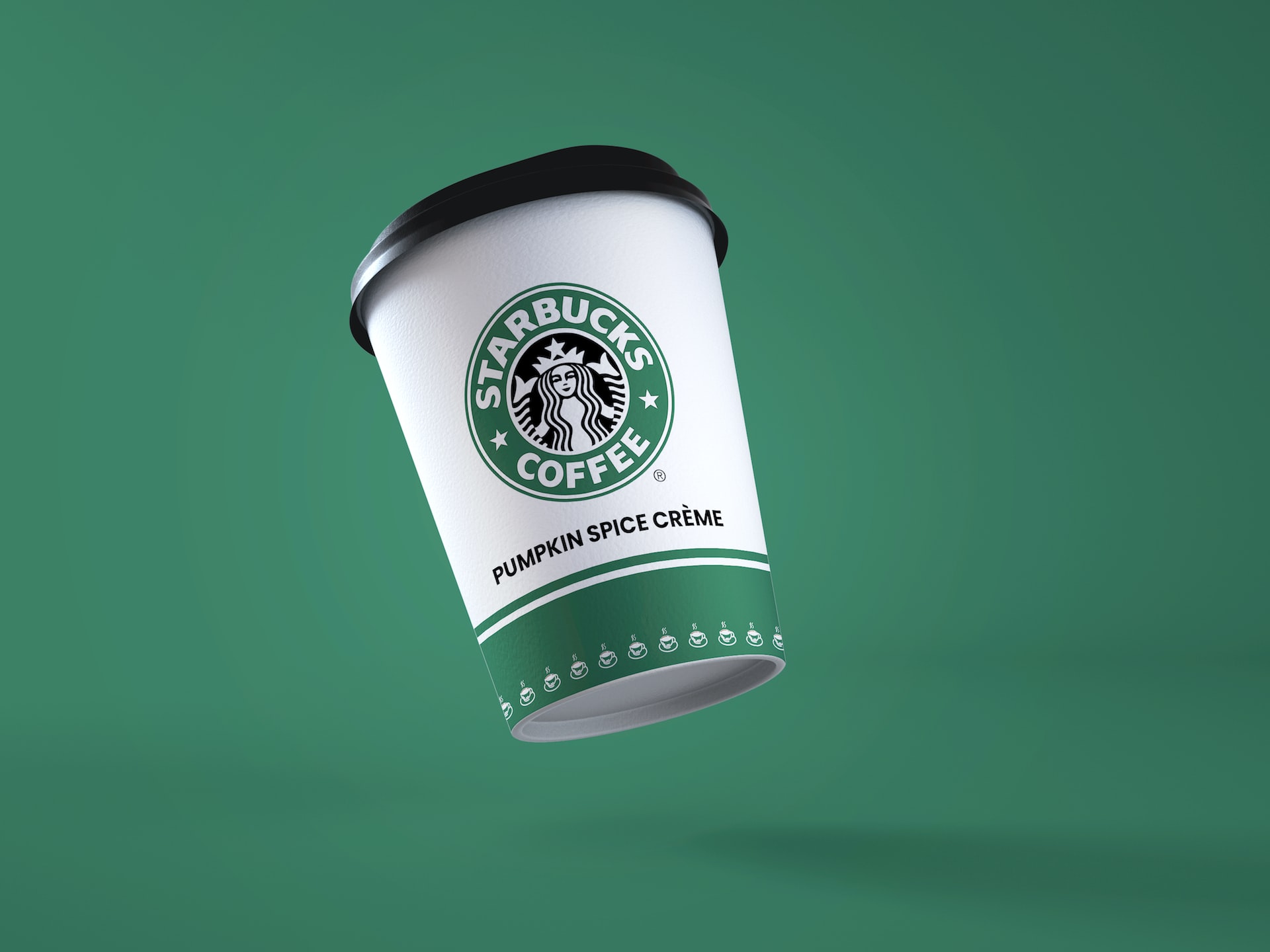
 Apps and Software1 year ago
Apps and Software1 year agoStarbucks Partner Hours App Login Guide
-

 Entertainment1 year ago
Entertainment1 year ago15 Best IPTV Service Providers in the UK 2025
-

 Tech3 years ago
Tech3 years agoIs Forecasting A Part Of Data Science?
-

 Economy4 years ago
Economy4 years agoWhat does it mean to Dream About Pennies?
-

 Entertainment1 year ago
Entertainment1 year ago10 Best Free Video Player Apps For Apple TV
-

 Entertainment3 years ago
Entertainment3 years agoHow To Enhance Your Viewing with Video Subtitle Support
-

 Entertainment6 months ago
Entertainment6 months agoExploring Moviesda 2025: Tamil Cinema’s Digital Hub for Streaming, Downloads & Digital Trends








